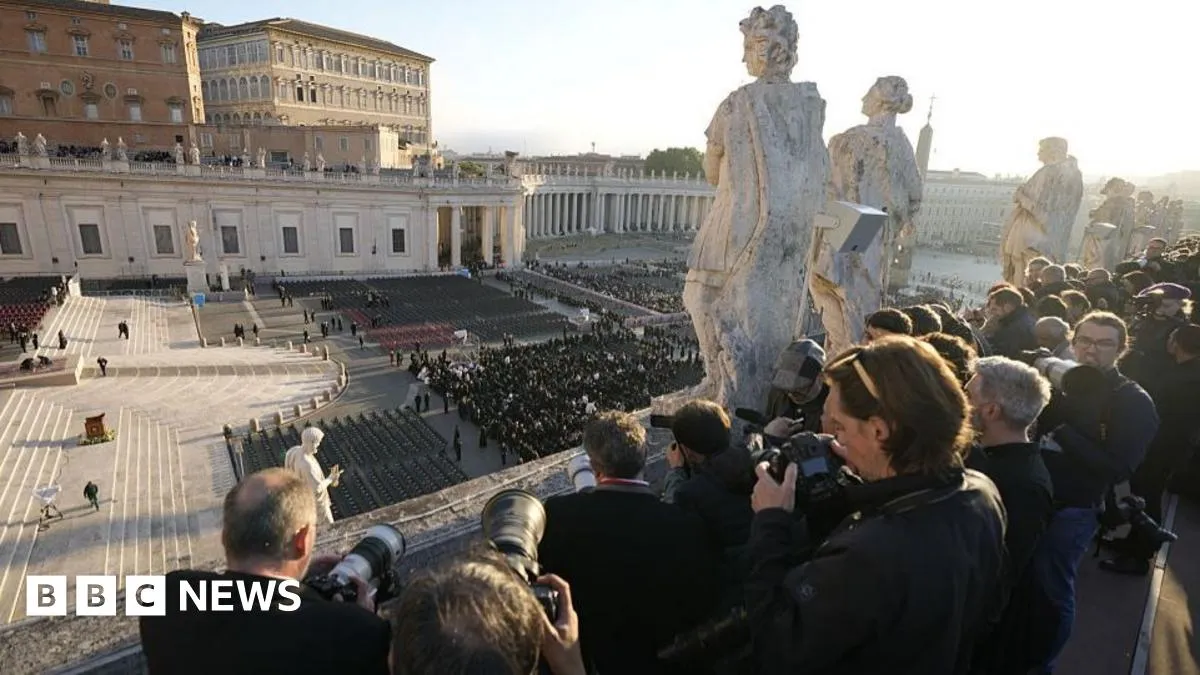
Traditionally, the remains of a pope are enclosed the day before the funeral in three nested coffins made from cypress, lead, and oak. However, Pope Francis, known for his humble approach, made a significant request that diverged from this long-standing custom. He asked to be buried in a simpler wooden coffin with a zinc interior, which is the coffin that will be prominently displayed during his funeral service. This decision reflects his commitment to simplicity and humility, values he championed throughout his papacy.
In a further break from tradition, Pope Francis chose to be entombed at Santa Maria Maggiore rather than the typical crypt at St Peter’s Basilica. This decision marks a departure from a practice that has been upheld for the past century. As the world mourns the loss of this influential leader, crowds have flocked to pay their respects, demonstrating the profound impact he had on the Catholic Church and its followers.
The public viewing of Pope Francis's body concluded on Friday evening after his coffin was brought to St Peter's Basilica on Wednesday morning. Over the course of three days of lying in state, more than 250,000 people visited to honor the late pontiff, as reported by the Vatican. Mourners gathered outside the basilica, many of them waiting in long queues to catch a final glimpse of the Pope, who was revered not only for his religious leadership but also for his compassionate approach to social issues.
On the first day of public viewing, St Peter's Basilica remained open all night to accommodate the influx of visitors. Originally scheduled to close at midnight, the doors stayed open until 05:30 local time. After a brief closure, the basilica reopened, allowing mourners to pay their respects nearly around the clock until the final closing at 18:00 on Friday.
Pope Francis, born Jorge Mario Bergoglio in Buenos Aires, Argentina, on December 17, 1936, was the first Pope from the Americas and the Southern Hemisphere. His election in 2013 was groundbreaking as he was also the first Jesuit to lead the Catholic Church—a group historically viewed with suspicion in Rome. Despite many assumptions that a younger man would ascend to the papacy, Cardinal Bergoglio was already in his seventies, presenting himself as a candidate who could bridge traditional and progressive views.
Throughout his papacy, Pope Francis emphasized humility over grandeur. He rejected the papal limousine for simpler transportation methods, even opting to share a bus with fellow cardinals. His sermons consistently called for social inclusion and criticized governments for neglecting the impoverished. His leadership style was characterized by a focus on social justice, making him a pivotal figure in modern Catholicism.
As the world prepares for Pope Francis's funeral, many people are gathering in St Peter's Square to honor his legacy. Caitlin, a New Yorker residing in Rome, expressed her emotions, stating, "Today is a once-in-a-lifetime experience to honor the Pope and his legacy." Others, like Catherine from Waterford, Ireland, came prepared for any type of weather, ready to pay tribute to the remarkable contributions of the late pontiff.
The funeral of Pope Francis will unfold after three days of lying in state. His coffin will be removed from St Peter's Basilica and transported to St Peter's Square, where the funeral mass is expected to take place outdoors. Heads of state and tens of thousands of mourners are anticipated to gather for this solemn event, which will begin at 10:00 local time and is projected to last approximately an hour and a half. Following the mass, Pope Francis's body will be taken to Santa Maria Maggiore for burial, marking the beginning of a nine-day mourning period.